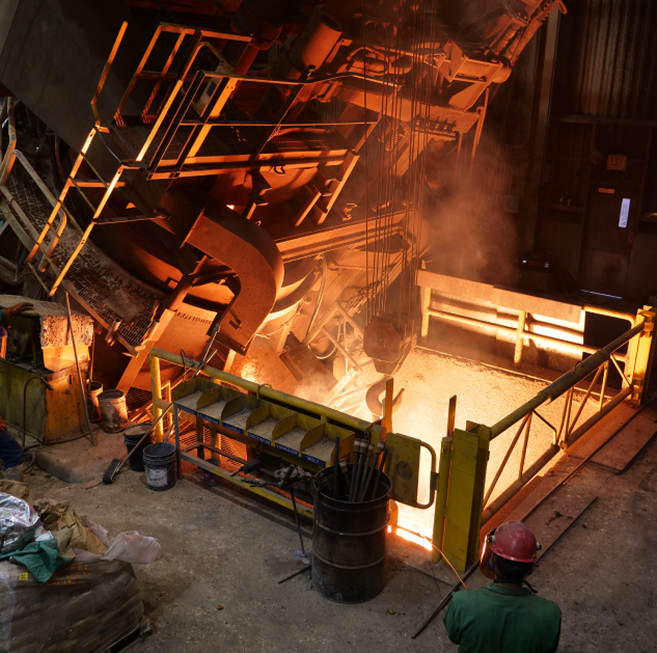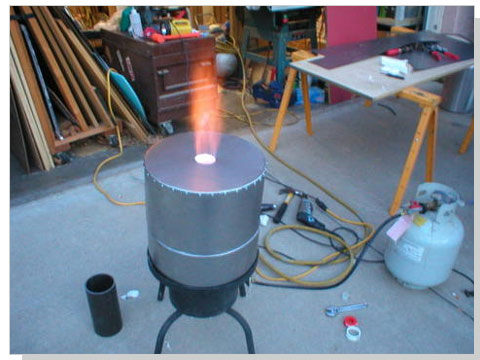What makes an Aluminum Foundry the best option for precision manufacturing
Wiki Article
Introducing the Complexities of Design and Production at a Metal Foundry
The layout and manufacturing procedures at a metal foundry entail a series of intricate steps. Each stage, from choosing resources to melting and casting, plays a critical role in the end product. Metal Casting. Accuracy and quality assurance are critical in this market. As technology advances, brand-new technologies are emerging. These advancements may redefine typical methods. What implications do these modifications hold for the future of metal shops?The Melting Process: Turning Raw Materials Into Liquid Metal
The melting procedure functions as the critical very first step in transforming basic materials right into liquid steel, a treatment crucial for foundry operations. This phase starts with the cautious choice of steels, which may consist of aluminum, copper, or iron, depending upon the wanted end product. Each product is reviewed for purity and structure to ensure suitable melting conditions.
As the metals reach their melting factor, they transform from strong to liquid, permitting more refinement. This procedure can additionally include the elimination of impurities with slag formation, ensuring the high quality of the liquid metal. Inevitably, the effective completion of the melting procedure lays the foundation for subsequent metalworking operations.
Molding Methods: Shaping Metal With Accuracy
Adhering to the melting procedure, the next stage in steel foundry procedures involves molding techniques that shape the fluid steel right into preferred forms. Various approaches are employed, each picked based upon the particular needs of the project. Sand casting, among the most typical techniques, utilizes a blend of sand and binder to create mold and mildews that can be quickly shaped and recycled. One more technique, financial investment casting, involves developing a wax pattern that is covered in a ceramic covering, permitting detailed designs and high precision.Die casting, on the other hand, makes use of high-pressure to inject molten steel into steel molds, leading to sturdy and uniform products. Additionally, the selection of molding technique affects the cooling rate, surface coating, and dimensional precision of the end product. Comprehending these methods is necessary for maximizing style and making certain the successful production of steel elements customized to certain applications.
Casting Methods: From Model to Production
Countless spreading approaches are used in steel shops to change from prototype development to full-scale manufacturing. Amongst these techniques, sand casting stands apart for its flexibility and cost-effectiveness, making it ideal for both large and small production runs. Investment spreading, known for its precision, is typically made use of for complicated geometries, permitting fine information in the end product. Pass away casting, appropriate for high-volume manufacturing, uses liquified metal injected into mold and mildews, giving exceptional surface area coating and dimensional precision.
Top Quality Control: Making Sure Excellence in Every Pour
While the spreading procedure can vary considerably between Metal Foundry techniques, preserving strenuous top quality control is important to determine that every pour fulfills the needed requirements. Quality control in a metal foundry includes a collection of systematic checks and analyses designed to determine defects early in the manufacturing procedure. This includes thorough assessments of basic materials, tracking of melting temperature levels, and evaluations of mold stability.Foundry employees utilize different screening techniques, such as non-destructive testing and dimensional verification, to ascertain that castings attain wanted requirements. In addition, adherence to established industry requirements and certifications improves the reliability of the final item.
Responses loopholes are likewise essential; any type of discrepancies noted throughout top quality evaluations are evaluated to refine processes and alleviate future mistakes. Inevitably, a society of quality control cultivates not just customer contentment however additionally a reputation for quality in the competitive landscape of steel production.
Advancements and Technologies: The Future of Metal Foundries
The landscape of metal shops is rapidly developing, driven by developments in modern technology and cutting-edge techniques. Automation and robotics are changing standard operations, improving effectiveness and accuracy throughout manufacturing. Automated pouring systems and robotic arms minimize human error, resulting in better outputs. Furthermore, the combination of fabricated knowledge is making it possible for anticipating upkeep, maximizing equipment performance, and reducing downtime.Additive manufacturing is arising as a game-changer, enabling fast prototyping and the production of complicated geometries that were previously unattainable. This innovation helps with the customization of metal components, satisfying specific customer requirements without significant time hold-ups.
Sustainability is additionally a key focus, with shops embracing greener practices, such as reusing scrap metal and using energy-efficient heaters. These technologies not just improve performance but likewise straighten with international initiatives towards eco responsible production, guaranteeing the future of metal shops remains durable and competitive in a transforming commercial landscape.
Regularly Asked Inquiries
What Sorts of Metals Are Typically Used in Foundries?
Typical steels made use of in shops include aluminum, cast iron, bronze, steel, and brass (Metal Casting). Each steel has unique properties, making them suitable for various applications in markets like automobile, aerospace, and construction, amongst othersJust How Do Foundries Manage Waste and Environmental Influence?
Shops take care of waste and environmental effect by executing recycling programs, utilizing sophisticated purification systems, and sticking to strict governing criteria. They frequently spend in lasting technologies to decrease emissions and promote responsible resource use throughout their operations.What Precaution Remain In Area for Employees?
Shops execute various safety and security procedures for employees, consisting of individual safety equipment, proper air flow systems, normal security training, emergency situation response protocols, and strict adherence to work health and wellness laws to lessen threats related to dangerous products and tools.How much time Does the Whole Production Refine Commonly Take?
The whole manufacturing process generally takes a number of weeks, depending upon the intricacy of the design and the products used. Elements such as mold and mildew prep work, melting, and cooling time significantly affect the overall duration of production.What Are the Key Challenges Dealt With by Metal Factories Today?
Metal shops today deal with obstacles such as increasing product costs, changing need, ecological guidelines, experienced labor lacks, and preserving quality assurance. These concerns make complex production effectiveness and productivity in an increasingly open market.The layout and manufacturing procedures at a metal foundry include a series of intricate steps. The melting process serves as the important first action in transforming raw materials right into liquid steel, a procedure necessary for foundry operations. Following the melting process, the following phase in metal foundry procedures entails molding techniques that form the liquid steel right into desired forms. Countless spreading techniques are employed in metal factories to change from prototype advancement to major manufacturing. Quality control in a metal foundry includes a series of systematic checks and examinations developed to recognize flaws early in the production procedure.
Report this wiki page